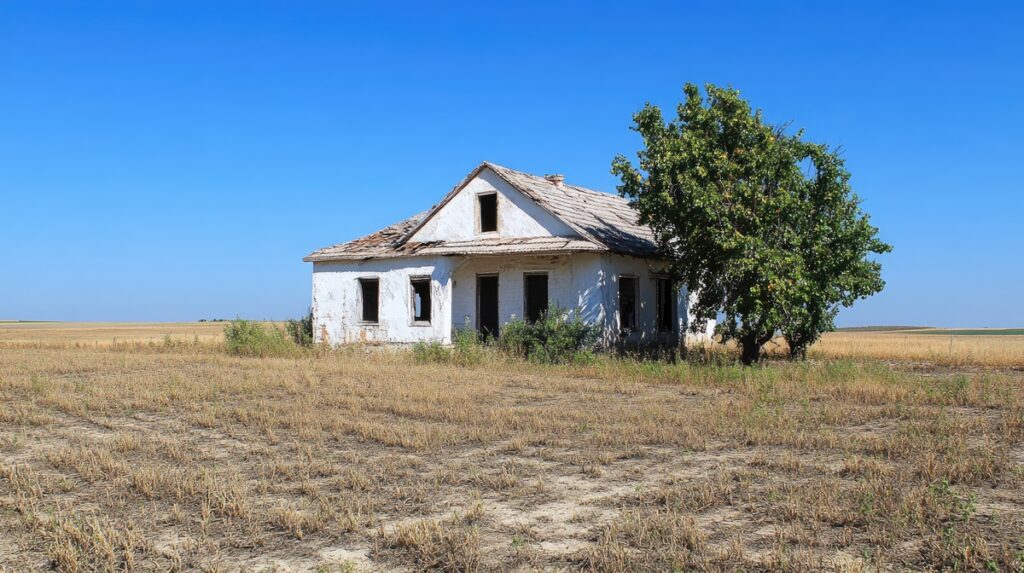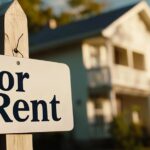ATTOM has released its Q2 2025 Vacant Property and Zombie Foreclosure Report, showing that 1.4 million (1,382,480) residential properties, or approximately 1.3% of all homes in the U.S., are vacant. ATTOM’s Q2 report marks the 13th consecutive quarter that the vacancy rate has hovered around the 1.3% range.
ATTOM’s analysis shows that 222,358 properties were in the foreclosure process during Q2 of 2025, up 4.8% from the first quarter of 2025, but down 6.3% year-over-year. Prior to this latest increase, the number of properties in foreclosure had gone down in each of the previous five quarters.
For the study, ATTOM analyzed county tax assessor data for 104.1 million residential properties for vacancy, broken down by foreclosure status and owner-occupancy status in Q2 of 2025. Only metropolitan statistical areas with at least 100,000 residential properties, counties with at least 50,000 residential properties, and zip codes with at least 1,000 residential properties were included in the analysis.
In Q2 2025, 7,329 of those pre-foreclosure properties (3.3%) were “zombie” properties, meaning they had been abandoned by their owners and sat vacant during the foreclosure process. The proportion of pre-foreclosure homes that are vacant is essentially the same as Q1 of 2025, but up slightly from 2.9% during the same period last year.
Zombie properties, which can fall into disrepair and negatively impact property values in a neighborhood, are seen as a sign of an unhealthy housing market and economy. The low rate of zombie properties—only one in every 14,207 homes in the U.S. in Q2 of 2025—is indicative of the strength of the post-pandemic housing market.
“Thankfully, we’re not seeing a lot of homes sitting vacant due to pending foreclosures, which is good for families, neighborhoods, and the market,” said Rob Barber, CEO of ATTOM. “However, foreclosure filings have shown a recent uptick—with April seeing a 14% increase compared to the same month last year.”
The number of zombie properties increased quarter-over-quarter in 30 states and in D.C., but mostly by small amounts. The changes were also relatively small in the 19 states that saw their number of zombie properties fall.
“So far, buyers seem to be scooping up these repossessed homes relatively quickly, so they aren’t sitting empty.” Barber said. “Nobody wants to see a return to the days of the 2008 housing crisis when vacant, blighted homes were common in many parts of the country.”
Year-over-year, the biggest percent increases in states that had at least 50 zombie homes were in:
- North Carolina (52.5% more zombie properties, from 59 in Q2 of 2024 to 90 in Q2 of 2025)
- Iowa (up 52.1%, from 71 to 108)
- Texas (up 51.9% from 162 to 246)
- South Carolina (up 43.8% from 64 to 92)
- Kansas (up 29%, from 69 to 89)
The biggest annual drops among states with at least 50 zombie homes in Q2 of 2024 were:
- Massachusetts (down 48.7%, from 76 to 39)
- Maryland (down 22.1%, from 86 to 67)
- New Jersey (down 17.6%, from 239 to 197)
- California (down 8.9%, from 269 to 245)
- Illinois (down 8.8%, from 724 to 660)
Highest Vacancy Rates Reported in the South
The vacancy rate for residential properties in the U.S. has remained steady around 1.3% for the 13th consecutive quarter. The states reporting the highest home vacancy rates in Q2 2025 were:
- Oklahoma (2.4%)
- Kansas (2.3%)
- Alabama (2.2%)
- Missouri (2.2%)
- West Virginia (2.1%)
The states with the lowest home vacancy rates in Q2 were reported in:
- New Hampshire (0.3%)
- Vermont (0.4%)
- New Jersey (0.5%)
- Idaho (0.5%)
- Connecticut (0.5%)
Most Large Metro Areas Have Zombie Home Rates Below National Rate
Approximately 55% (76) of the 138 metropolitan statistical areas (MSAs) in our analysis that had at least 100,000 residential properties and at least 100 properties in pre-foreclosure during Q2 of 2025 had zombie foreclosure rates below the national rate of 3.3%.
The metro areas with the highest proportion of pre-foreclosure homes that were vacant were:
- Wichita, Kansas (12.1%)
- Peoria, Illinois (11.8%)
- Toledo, Ohio (10.2%)
- Cedar Rapids, Iowa (10.2%)
- Cleveland, Ohio (10%)
The metro areas with the lowest proportion of zombie foreclosures were found in:
- Barnstable, Massachusetts (0 percent)
- Atlantic City, New Jersey (0.2%)
- Provo, Utah (0.3%)
- Trenton, New Jersey (0.5%)
- Stockton, California (0.6%)
Investor & Bank-Owned Homes Experience Higher Vacancy Rates
There were 24.8 million investor-owned properties in our analysis of Q2 2025 home data, with a nationwide vacancy rate of 3.5%. included:
- Indiana (7.3%)
- Illinois (6.2%)
- Alabama (6%)
- Oklahoma (6%)
- Ohio (5.8%)
The states with the lowest investor-owned vacancy rates were:
- New Hampshire (0.9%)
- Vermont (1%)
- Idaho (1.2%)
- Utah (1.5%)
- North Dakota (1.6%)
Zip Codes Reporting High Zombie Home Rates
Nearly 36% (781) of the 2,166 zip codes in ATTOM’s analysis that had at least 25 properties in pre-foreclosure during Q2 of 2025 had zombie foreclosure rates above the national rate of 3.3%. While in 42% (903) of those zip codes, there were no zombie foreclosures reported.
The zip codes with the highest zombie foreclosure rates were found in:
- 61605 in Peoria, Illinois (51.9%)
- 44108 in Cleveland, Ohio (42.2%)
- 61603 in Peoria, Illinois (34.6%)
- 32118 in Deltona, Florida (34.2%)
- 33708 in Tampa, Florida (33.3%)
Click here for more on ATTOM’s Q2 analysis of foreclosed and vacant homes.





